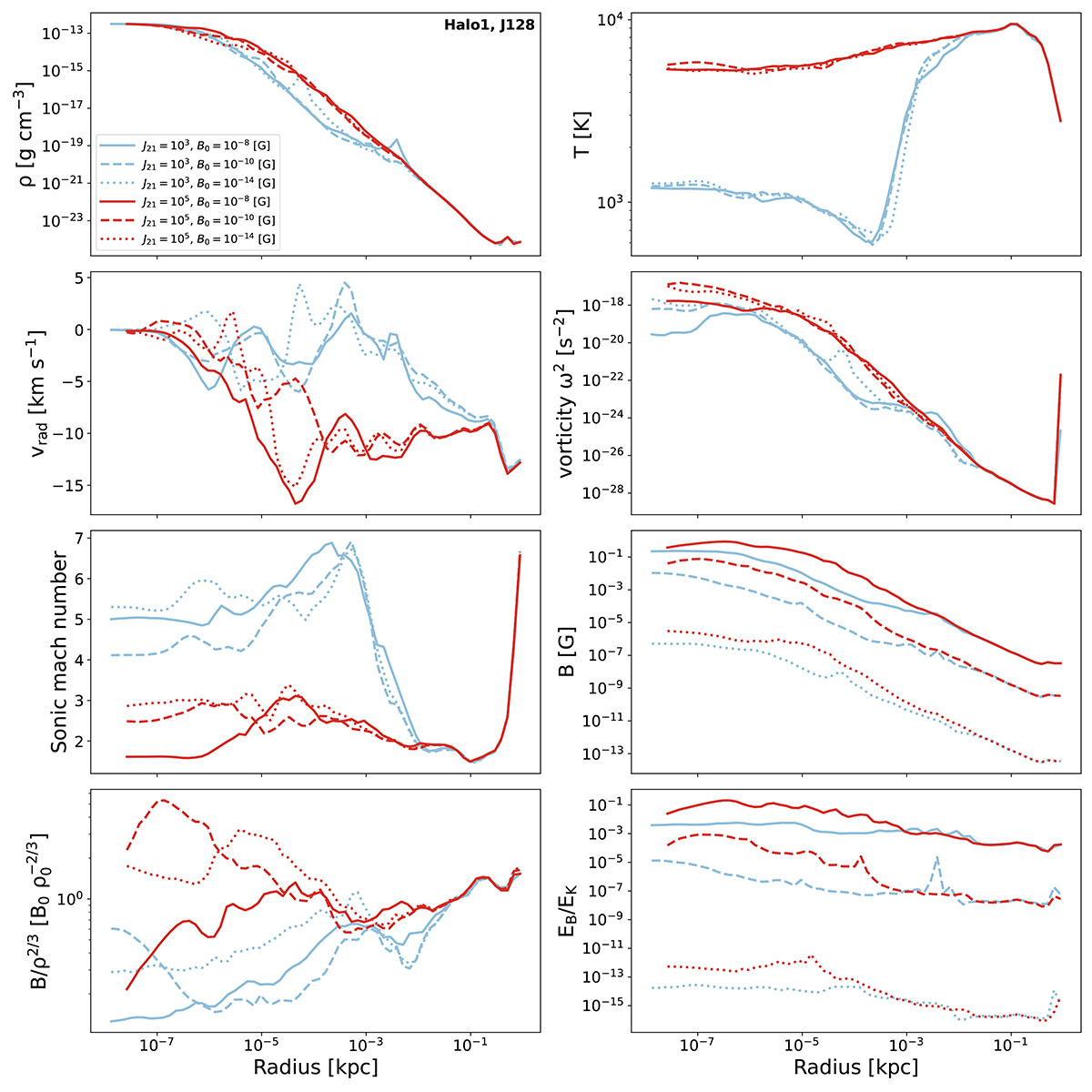Fig. 3.

Download original image
Mass-weighted spherically binned radial profiles of density, temperature, radial velocity, vorticity squared, sonic Mach number, magnetic field strength, magnetic field amplification B/ρ2/3, and the magnetic-to-kinetic energy density ratio EB/EK for halo 1 when reaching a peak density of 3 × 10−13 g cm−3 using a fixed Jeans resolution of 128 cells per Jeans length. The quantity B/ρ2/3 is normalised by ![]() with B0 the initial magnetic field strength and ρ0 the cosmic mean baryon density at z = 100. The light blue lines represent the simulations with J21 = 103 where the cooling is driven via molecular hydrogen, and the red lines are for simulations with J21 = 105 where the cooling is driven by atomic hydrogen. The solid lines are for runs with B0 = 10−8 [G] (proper), dashed lines for runs with B0 = 10−10 [G] (proper), and dotted lines for runs with B0 = 10−14 [G] (proper). The infall velocity tends to be higher and the vorticity tends to be larger for the simulations using J21 = 105, while the sonic mach number tends to be smaller compared to the simulations with J21 = 103 following the thermal evolution of the halo. Magnetic field strength, B/ρ2/3 and EB/EK also tend to be higher for the simulations in the atomic cooling regime, which is consistent with the behaviour of the physical properties of the halo.
with B0 the initial magnetic field strength and ρ0 the cosmic mean baryon density at z = 100. The light blue lines represent the simulations with J21 = 103 where the cooling is driven via molecular hydrogen, and the red lines are for simulations with J21 = 105 where the cooling is driven by atomic hydrogen. The solid lines are for runs with B0 = 10−8 [G] (proper), dashed lines for runs with B0 = 10−10 [G] (proper), and dotted lines for runs with B0 = 10−14 [G] (proper). The infall velocity tends to be higher and the vorticity tends to be larger for the simulations using J21 = 105, while the sonic mach number tends to be smaller compared to the simulations with J21 = 103 following the thermal evolution of the halo. Magnetic field strength, B/ρ2/3 and EB/EK also tend to be higher for the simulations in the atomic cooling regime, which is consistent with the behaviour of the physical properties of the halo.
Current usage metrics show cumulative count of Article Views (full-text article views including HTML views, PDF and ePub downloads, according to the available data) and Abstracts Views on Vision4Press platform.
Data correspond to usage on the plateform after 2015. The current usage metrics is available 48-96 hours after online publication and is updated daily on week days.
Initial download of the metrics may take a while.


